#ended up in port Seattle and joined the military there
Text

ROONEY SHEPARD (CP2077 AU)
You only feel it when it's lost
Gettin' through still has a cost
Quietly, it slips through your fingers, love
Falling from you drop by drop
-Who We Are by Hozier
TEMPLATE by @marivenah
Taglist (Lmk if you want to be added or removed): @sstewyhosseini, @nightbloodbix, @strangefable, @marivenah
#commander rooney shepard#I won't let fear compromise who I am#myedits#v: cyberpunk 2077#hi everybody#dropping this and leaving it on your doorstep lol#just wanted to make something for their AU#hope you guys won't mind me infodumping Rooney's CP2077 lore in the tags#I've been trying to merge ME and CP2077 lore#born in Canada and raised there until they were 16 when their village was wiped out leaving Rooney the sole survivor#they traveled with nomads for a while#ended up in port Seattle and joined the military there#ended up distinguishing themself and fighting in the unification war#they were part of the space force afterwards#until they left the military 1 1/2 years before the end of the game and landed in night city#I kinda wanna include the beginning of ME2 with dying and getting the cybernetics but I haven't figured out that part yet#also I already have a ship for them#but it's definitely not anyone you would think lol#It started out as a what if and uh...it now has a playlist#anyway thank you for listening to my verbal stream#and now I'm off
27 notes
·
View notes
Text
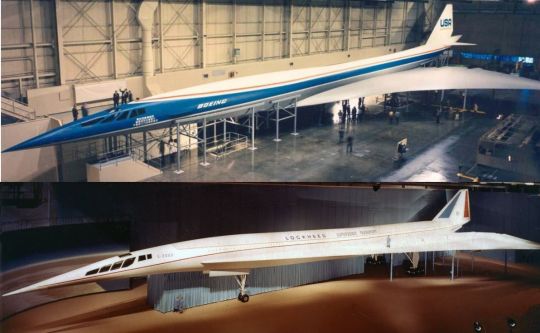
-Mockups of the two final American SST concepts, the Boeing 2707 and the Lockheed L-2000. | Composite Photo: Justin Gibb
FLIGHTLINE: 136 - AMERICAN SST PROGRAM
Various programs to develop a supersonic transport in the US stretched from the middle 1950s until the early 1970s, but no aircraft ever resulted.
The first recorded supersonic flight (the speed of sound is 767mph at 20°C/68°F at sea level) was on 14 October 1947, when the American X-1, piloted by Chuck Yeager, reached Mach 1.06. By the 1950s, supersonic flight became a more regular occurrence, though it was still almost exclusively restricted to military pilots. Around this time, various projects around the world began to develop airliners that could break the sound barrier too. Designs like the Sud Aviation Super-Caravelle and Bristol Type 223 were sketched, but technical limitations as well as a lack of funding stalled those efforts.
♫NINETY MINUTES FROM NEW YORK TO PARIS♫
Research continued however, and by the early-1960s a new round of programs were started, with BAC (later BAe and BAE Systems) and Sud Aviation (later Aérospatiale and Airbus) joining forces to produce what became Concorde, while the Soviet design bureau Tupolev developed the Tu-144 (NATO reporting name "Charger"). Numerous American carriers placed orders for Concorde aircraft, but spiraling costs and a desire to develop a domestic SST saw those orders canceled in the early 1970s. In the end, only Air France and BOAC/British Airways operated Concorde, while the Tu-144 was exclusively flown by the Soviet state airline Aeroflot.
BUY AMERICAN!
The FAA estimated in the early 1960s that there would be a market for 500+ SSTs by the year 1990. Fearing Anglo-French domination of the airline industry, the US Congress began funding various research programs, and President John F Kennedy announced a National Supersonic Transport program on 5 June 1963. Requests for proposals were sent to Boeing, Lockheed, and North American for the airframes; and Curtiss-Wright, General Electric and Pratt & Whitney for engines. The request stipulated a cruise speed of Mach 3, and a passenger capacity of up to 300. Preliminary designs were submitted on 15 January 1964
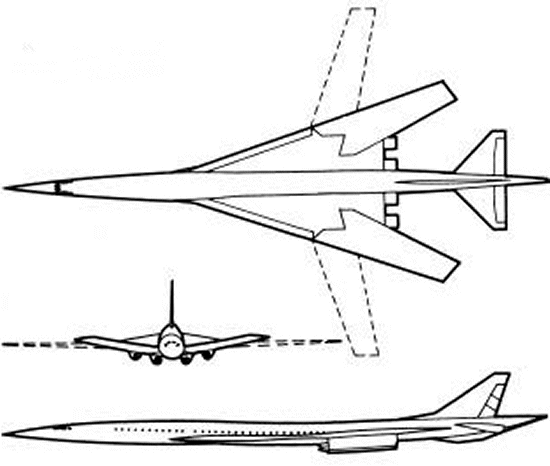
-Line drawing of the Boeing 733-790 SST, which initially featured swing wings. | Illustration: Boeing
The Boeing 733 model featured a large blended wing root with variable geometry outer panels, resembling an enlarged Rockwell B-1. The proposal included optional fuselage extensions, potentially increasing capacity to 227 passengers.

-Line drawing of the the CL-823. | Illustration: Lockheed Corp.
Lockheed's CL-823 was functionally an enlarged Concorde, though the wing shape was a cranked arrow rather than Concorde's ogival delta.
The North American NAC-60 was the smallest and slowest of the competitors, potentially transporting 187 passengers at Mach 2.65.
In 1965 the FAA downselected the NAC-60 design, as well as Curtiss-Wright's engine work, freeing up funds for Boeing and Lockheed on the airframe side and P&W and GE for the engine development.
TIME TO SHARPEN YOUR PENCIL.
The FAA scheduled a final selection in 1966, and requested detailed proposals from Boeing and Lockheed. Boeing had gone through several iterations of the Model 733, with the 733-390 being presented in September 1966. The aircraft was one of the first wide-body airliners, with 2-3-2 seating. In the 30-seat first class section, small tv's were to be integrated into a console between the seats, while in the 247-seat tourist class section larger retractable tv's would drop from the overheads every six rows. Externally, the engine pods had been moved back under the tail, and the wings, when swept back, would form a delta with the tail.
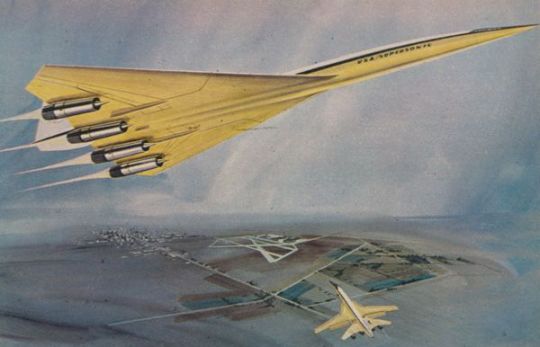
-Illustration of the 733-390, with one at maximum sweep and one at minimum. | Illustration: Boeing.
Lockheed's CL-823 had evolved as well, with the L-2000-1 design having changed from a cranked arrow to a delta wing, with the engines separated into individual pods. In order to speed production, the L-2000 was projected to use a derivative of the J58 engine that had powered the A-12 OXCART and SR-71 Blackbird. New requirements from the government saw changes to the wing and fuselage, and the engine pods were redesigned to accommodate either the P&W JTF-17A or GE4 designed as part of the SST program. The final design presented to the FAA was the L-2000-7A/B (the B was 20 feet longer), which had a passenger capacity of 230.

-Advertising image of the L-2000-7A. | Illustration: Monsigneurhulot
THE FINAL SHOWDOWN
The final designs, complete with full-scale mockups, were presented in September 1966.

-The full-scale mockup of the 733-390, in a striking white-over-yellow paint scheme. The size of the plane is evident from the man standing near the third jack. | Photo: Boeing

-Appearing no less impressive, the Lockheed L-2000 mockup. | Photo: Lockheed
FAA review of the competing SSTs took until December, with the Boeing design being announced the winner on 1 January 1967. The L-2000 was judged to easier to produce, but it was also thought to be less risky and advanced than the Boeing entry, and thus the latter was more in the spirit of the design mandate. Also, the Lockheed craft was anticipated to be louder with the JTF-17A engines, as well as being slower.
Boeing anticipated construction of the 733-390 prototypes, now referred to as the 2707-200, would begin in 1967, with first flight in 1970. Construction of the production models was expected to commence 1969, with first flight in 1972 and FAA certification anticipated by 1974.

-The public enthusiasm for the SST program was initially high, with scale models and toys of the design being release by multiple companies. Seattle's NBA team, formed in 1967, was initially named the SuperSonics. | Photo: oldmodelkits.com
NO PLAN SURVIVES FIRST CONTACT WITH THE ENEMY (IN THIS CASE, PHYSICS)
Almost immediately, Boeing began encountering problems with the design. Canards were added to improve flight characteristics, but this added weight. The swing wing mechanism were also much heavier than anticipated, with one pivot section being an eleven feet long, two-and-a-half feet thick piece of titanium weighing 4,600lbs. All of this added weight was eating into the plane's range and lowering the speed, and in October 1968 the company made the decision to delete the variable geometry wings and utilize a fixed delta instead. Fabrication of a mockup of the new design, the 2707-300, as well as two prototypes, commenced in September 1969. Despite these issues and delays, by October 1969 Boeing had orders for 122 2707s from 26 airlines, including Alitalia, Canadian Pacific Airlines, Delta Air Lines, Iberia, KLM, Northwest Airlines, and World Airways.
It was during this period however than organized opposition to SSTs became more pronounced. During the first half of 1964, the FAA conducted Operation Bongo II, under which Oklahoma City, Oklahoma was subjected a total of 1,253 sonic booms. Up to eight booms were scheduled, beginning at 7am and ending in the afternoon. Various aircraft were used, from fighters like the F-104 to bombers like the B-58 and XB-70. The results of the experiment were encouraging, with only 9,594 complaints of damage to buildings, 4,629 formal damage claims, and 229 claims for a total of $12,845.32 ($108.983.34 in 2021). 73% of subjects in the study said that they could live indefinitely with eight sonic booms per day, while 25% said that they couldn't. Approximately 3% of the population filed complaints or lawsuits. The FAA's handling of the program and response to the claims completely undid the public's acceptance of supersonic flight however. The program was undertaken with minimal engagement of the local authorities, and afterwards the FAA dismissed 94% of the claims received, attracting the ire of state and national leaders. Class action lawsuits were filed against the government, and public opinion turned against the SST. This culminated in a national ban on supersonic flight over land. Another source of concerns was the exhaust from the jet engines, specifically nitrogen oxides, which were found to damage stratospheric ozone. A fleet of 500 SSTs was calculated to cause a drop in ozone of 1 to 2%, though changes in fuel and engine technology would help mange this.
THE COLLAPSING STAGE...
The mounting environmental concerns, souring public perception, continuing technical hurdles and competing projects saw the funding for the SST program drying up. Both the House and Senate voted in 1971 to end funding for the program, spelling the end of American SST. Whatever work completed on the prototypes was dismantled, and the one completed 2707-300 mockup was sold to the SST Aviation Exhibit Center in Florida, which displayed it from 1973 until 1981. Hard times saw the closure of the museum, which was then sold to the Faith World Church in 1983. For the next seven years, the Osceola New Life Assembly of God held services beneath the wing of the only remaining example of the US' supersonic airliner program.
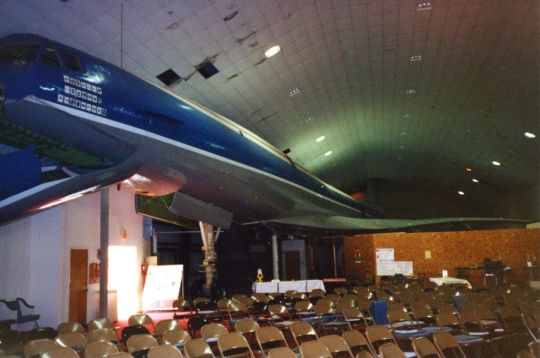
-The 2707 mockup some time in the 1980s. Sunday school classes were held under the port wing for nearly a decade. | Photo: Boeing
In 1990 the remnants of the mockup were sold to Stan Hiller, helicopter pioneer and owner of the Hiller Aviation museum. In 2013 the forward 90' section of the fuselage, now all that remained, were shipped to the Museum of Flight was part of a transfer between the two museums. What's left of the 2707-300 is now under restoration; the last remnants of a grand dream to move air travel forward at Mach 3.

-The remaining segment of the 2707, now 50 years after the program's termination. | Photo: Boeing
#aircraft#aviation#avgeek#airplanes#airplane#cold war#cold war history#coldwar#usaf#aviation history#sst#seattle supersonics#supersonic jet#supersonic transport#supersonic airliner#Boeing#Lockheed#the 60s#the 70s#the sixties#the seventies#faa#air travel#Concorde#boac#air france#Tupolev#tu-144#tu 144#concordeski
95 notes
·
View notes
Text
The World Must Burn!!! Part 3
The World Must Burn!!! Part 3: So Many Dead.
Since we left off, The Federalists are defeated, and I was doing battle with Long and the PSA. I had two uprisings in there territories; the one in the South was successful, mostly due to my ability to sent reinforcements via naval transport. The in that happened in the PSA, was so lucky. Having to move my forces through Mexico, which give me military access, I couldn’t get forces there in time, before the mountain divisions were pushed from the port they were holding. So the guys who suppose to get a foothold on the west coast, instead ended going to the Southern packet.
Meanwhile CSA troops were making head along the east coast, and Texas if I remember correctly. Meanwhile the PSA where safe behind the Rockies, with their troops wishing for a theoretical nuclear holocaust. In other news; the Union Rebellion with the CSA territory were crushed, meaning I could use those divisions elsewhere. I think I sent them to fill a gap in the line I think, possibly with the PSA. Eventuality I expended the southern packet; pushing outward, and eventuality linked up the troops advancing from the north. With the Union State split in two; the next move was secure Florida, and finally take New Orleans.
Somewhere in that, The PSA and Union joined force against me. Along with the uprisings, if one faction has the upper hand in the civil war, the other two will join forces against them. Deal With The Devil the news event calls it, and I find it a pain in the ass. With some of there guns no longer pointed at each, they can point them at me. Oddly enough another CSA uprising happen, this time in Rockies close to the front. Usually with this uprising, I would have them march over the nearby naval port, before the PSA could react.
This time I try to have rebel forces link up with the main army, just to increase my foot hold in the Rocky meat grinder. Then another Union uprising happens in CSA territory, and have to scramble to deal with them. I manged to crush one, but fail to do the same with the one in Washington. Before the took a port, and got reinforcements. However I manged to take New Orleans, force the Union into Texas. It didn’t take long before the Union collapsed.
One down, one more to going.
So the PSA try to split from country, due it MacArthur coup which killed democracy in the USA. So they willing negotiate with us, and I entertain the idea only to tell the PSA to fuck itself. Look, I don’t like the borders PSA wants… for some reason. Feels like I am getting a short end of a stick, especially with all the work I done. So for that; approximately 3 million Americans have to die. The Rocky Mountains are a natural defensive line, I can only guess a the defense bonus one gets protecting mountain area.
This is where the uprising worked in my favor. I reform my lines, and pushing westward; of course smash against the mountains. Up near the Canadian border where the Uprising happened, I slowing start to chip away at the PSA. First reaching the West Coast, then taking Seattle. Once again my men advancing down the coast, and along with gaining the ground at near the Mexico border. Of course the separatist movement on the West Coast, apparently have supporters in the East. Another uprising, I mange to crush to two, once again the one near New York and Washington gains ground.
In the end,I take the PSA last victory point. Surrounding their remaining west coast forces, in a small packet. Then collapse of the PSA; CSA victory of the Second American Civil War. While this was going, Germany and the Internationale went to war. Austria and it allies join on the German side, Entente takes opportunity to attacks the Internationale. When it looks like the syndicalists are being gang up on; Russia starts it Europe invasion, Japan makes it move on a German East Asia, and Poland is fighting Austrian alliance for some reason.
Now the quickest way to kill the Entente, is to invade Canada... guess which country is closeness to Canada, that just had a successful syndicalists takeover. It’s time to take New England back! Oh, I have to rebuild the country.
Next up: invasion of Canada, and reconstruction.
2 notes
·
View notes
Text
Our China Crash Course
Our adventure through China was an absolute whirlwind that covered almost 3,000 miles in 10 days. To see China in that amount of time is like taking a 10 day trip to see New York, D.C., LA, and Seattle. It was absolutely insane.
But we had a good reason for the quickness—Blakely’s family came to join us and they only had a small window. We enjoyed the company (and the upgrade in accommodations!).
We started in Hong Kong, which is a great gateway into China since it is much more connected to the outside world. Reminder: the Chinese government significantly limits news flow of its citizens, and this makes them culturally cut off from the rest of society. While Hong Kong technically falls under Chinese jurisdiction, it was a British colony until 1997 when the Brits returned it to China. Hong Kong maintains a separate political and economic system from China, but the mainland significantly influences the legislation. China continues to broker more influence, and unfortunately protests don’t make much difference despite making international news.
Blakely and Ryan arrived 2 days earlier than the rest of the group, which was best as we were VERY dusty from our time in Nepal. We stayed at the Kowloon Shangri-la Hotel, which, as could be expected, were MUCH better accommodations than our norm.
We enjoyed the hotel then headed to explore the city. Of course, a highlight for us was the spectacular architecture. As city folk we really appreciate a good skyscraper, and Hong Kong has plenty of those! Hong Kong has a gorgeous skyline, with more skyscrapers than anywhere in the world, and Victoria Harbor elevates the view further. Ryan’s favorites were the HSBC Building, International Commerce Center and Bank of China Tower. Then we went to Man Mo temple, which is dedicated to the gods of literature and war. The incense and atmosphere make it a calm and gorgeous stop.
That night, we headed to the fabulous SoHo neighborhood (not to be confused with the SoHo in NYC, this stands for South of Hollywood Road) which has one of our favorite features: escalator sidewalks. First we hit a wine and cheese bar, and then one of our favorite restaurants Little Bao. So fun, so delicious, and everything we needed.
Finally, the rest of the group arrived. We didn’t pause long before taking them on a walking tour the neighborhood. Then for dinner, we headed to the world renowned Din Tai Fung restaurant for delicious dumplings and noodles. Finally, we headed to Temple Street Night Market for a bit of chaos and shopping! Unfortunately the market is MUCH more glitz than glamor, and as many things in China, focused on the shiny quantity over quality!
The next day was a big one. We started on a tram up to Victoria Peak to see the sights,. Due to the crazy fog, the view half-way up was better. Then we took a boat tour to see the floating village of Aberdeen and the temples there. Afterwards, a little tea time at the Peninsula hotel, then cocktails while watching the harbor light show.
Next, we jetted off to Guilin and immediately went to the gorgeous Reed Flute cave. In case the natural structure isn’t enough, the gorgeous light displays make the cave even more mystical and impressive (though a few thought they were tacky and preferred the natural landscape!). In Guilin, we stayed at the beautiful Guilin Shangri-la Hotel.
Next on the itinerary was a drive out to Longji, with hiking to see the gorgeous rice paddies. Absolutely worth the hike (to say nothing of needing to work off those dumplings!), this was a trip highlight for all of us.
That night we took a light cruise around the lakes of Guilin. The Chinese LOVE a light show, and we were pretty impressed ourselves!
The next day was a highlight: A boat cruise along the Li River. This site has inspired painters and artists for centuries, and it inspired the artwork on the 50 yen note today. Blakely couldn’t resist the beauty recreated by a local artist on rice paper, which is now hanging in our house!
After the day’s craziness, we took a flight to Xian and settled into the Wyndham Grand Xian hotel, another fabulous place!
Xian attracts visitors from all over the world with the incredible Terracotta Warriors. Even with all of the hype, they do NOT disappoint. Here’s the skinny:
When the first Emperor of China Qin Shi Huang died around 210 BC, he was buried with an army he commissioned to protect him in the afterlife. There are approximately 8,000 soldiers, 130 chariots, 520 horses and 150 cavalry horses. Additionally, there are officials, acrobats, strongmen and musicians. All of the statues are life sized, uniquely carved and painted, and buried in different sized pits. The largest of the pits is housed in the museum for viewing. It is INSANE to see.
Even cooler: the army is just a portion of the remains left to be discovered. Excavation is ongoing, but ground-penetrating radar detects a larger city resembling the emperor’s imperial palace and court. Next we gobbled down some delicious beef noodle soup!
The next day we had a gorgeous bike ride around Xian’s ancient city walls, which were built in the 14th Century and form one of the best-preserved fortresses in the world. After earning our treat, we had a walk through the Great Tang All Day Mall and celebrated with Popsicles and BBQ. This is a market of which we all approved!
After Xian we flew to Shanghai and got to visit the historic and beautiful Zhujiajiao village. We felt like we stepped back in time! We had a canal cruise, did a little shopping (of course) and went to see a historic mansion with traditional Chinese gardens.
Shang Hai was absolutely our favorite city in mainland China, with a gorgeous skyline and metropolitan atmosphere. As discussed, we love cities. We walked along the river and had a fabulous dinner before enjoying one of THE most bizarre and fantastic shows we’d ever seen: The Amazing Acrobats of Shanghai. We will never be able to see another acrobat show again.
The following day the boys and girls separated, and the boys took a tour of the mind blowing Shang hai port. Afterwards we all flew to our last stop (WHEW) Beijing.
The next day was a highlight and it started with Tian’anmen Square. According to our official guide it is “the largest city square in the world” (it is actually only one of the top 10) “and the spiritual heart of China, where the national flag is raised exactly at sunrise every day.” Of course, what isn’t mentioned in the paraphernalia is that this square is infamous for the horrendous massacre of protestors in 1989. Troops with automatic rifles and tanks killed hundreds of demonstrators who were trying to block the military’s advance to the square (where a student protest was happening).
Today, Tian’anmen is a heavily regulated area and indicative of Chinese policy in general. Before entry, visitors and their belongings are searched and IDs checked. Protests are strictly forbidden, and discussion of the massacre nonexistent. Furthermore, in the 70s the square held ginormous portraits of 6 dictators (including Karl Marx, Vladimir Lenin, and Joseph Stalin), but upon the death of Mao Sedong (founding father of the People’s Republic of China) the other portraits were removed and only his remains. Don’t worry, the other portraits are still brought out in a parade around the square on Labor Day and National Day.
For all its dark past, Tian’anmen Square allows entrance to one of the coolest places in China: The Forbidden City. The Forbidden City is a palace complex in Central Beijing and housed the imperial palace from 1420-1912. Now, it is a Palace Museum and provides an excellent snapshot of gorgeous Chinese architecture, artwork, and artefacts. Our personal favorite was the Hall of Clocks, a display of 200 clocks and watches from the imperial collection.
Last stop for the day, we visited the Temple of Heaven, a complex of religious buildings that was visited yearly by emperors to ensure a good harvest.
Ok. Now for the part we’ve all been waiting for. The famous symbol of China, an architectural wonder of the world, stretching 6,700 km and over 2,000 years old: The Great Wall of China.
The wall was constructed over many different dynasties to protect the ever-changing empire borders. The most extensive and modern construction occurred as recently as the 14th Century. Effectiveness of the wall varied, and our guide informed us that bribery decreased the walls success. Unfortunately, with the invention of air invasion, the wall was largely unproductive in modern era. That said, it is magnificent to see.
Though it can’t be seen from the moon (common misconception), it can be seen from space at a low orbit when the conditions are right.
Maybe one of our favorite parts was the ride down. Take a look.
To get to the wall we enjoyed the Sacred Path, which is lined with animals, mystical beasts and officials who serve the emperor in his afterlife. Sitting emperors perform rituals there for the ancestors once a year.
Our last stop in China was one of our favorites: The Summer Palace. This was an imperial summer resort of the Qing Dynasty and it has gorgeous grounds that are the recognized as the most splendid classical gardens of China. The incredible decoration on the buildings made us constantly look up, and we loved finishing our trip with such a gorgeous example of Chinese art. Our only complaint was that we visited on a holiday so we felt like all of China was there with us! One thing is for sure: China has a LOT of people!
So ended our blitz through China, and if you’re tired from reading it you can imagine how tired we were for doing it! The only answer: a blissful vacation to Bali.
0 notes
Text
Tierra del Fuego by Air, Land and Sea
Tierra del Fuego, Argentina
31 Aug. - 05 Sept., 2018
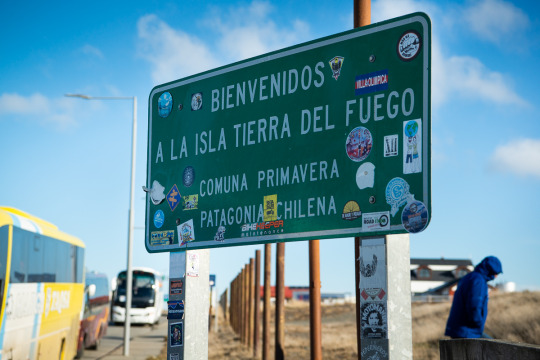
Sometimes you get the chance to do something incredible, and all you have to do is step up and say ‘yes.’ I found myself in that situation earlier this year, as I eagerly accepted a business trip to our company headquarters in Argentina for the first time.
It was only my second visit to South America, after a spring break in Bolivia once during college. Could I work and speak entirely in Spanish? On the road for two weeks in midwinter? Promoting my own project at a conference for travel professionals? It was a dream trip and I couldn’t accept quickly enough!
I had written plenty of website pages and social media captions about Ushuaia, now it was time to live it. I brushed up on my castellano, prepared my trade show materials and, after three flights and twenty-three hours of travel, finally found myself in the city at the end of the world.
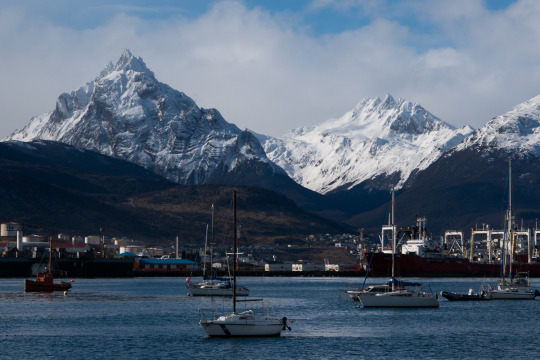
I had been working in the travel industry for long enough to know a little about it – built along the north shore of the Beagle Channel, settled by missionaries and once a penal colony, current population: 70,000. With the largest port in the region, it’s the last stop for expeditions and cruises heading to Antarctica.

In the winter, the city empties of foreign tourists and cruise ships and becomes a destination for Argentinian tourists and European ski racing teams, drawn to the ski resort Cerro Castor. The streets turn to mud and the wind coming in from the sea picks up great swirling dust clouds, blanketing cars and buildings and people alike. It is a harsh place and I absolutely loved it. There is something unique about travelling in the ‘off-season,’ when the crowds thin and the people can get back to living as they normally do. You see how things really are, the unvarnished, real life in a place 8000 miles away from home.

First up on my itinerary was a trip with our regional passenger ferry, Seaboat Navigation, across The Beagle Channel, a narrow waterway that separates Argentina from the Chilean islands to the south. The journey is a quick one in our 12-meter rigid inflatable, about an hour and a half with stops to visit the sea lions, penguins and cormorants at Isla de Lobos, Isla de Pajaros and the well known lighthouse, Faro Les Eclaireurs. We even met the crew of a Chilean fishing boat out of Punta Arenas and traded fresh pastries for a pair of centolla (king crab) – not a bad deal at all!
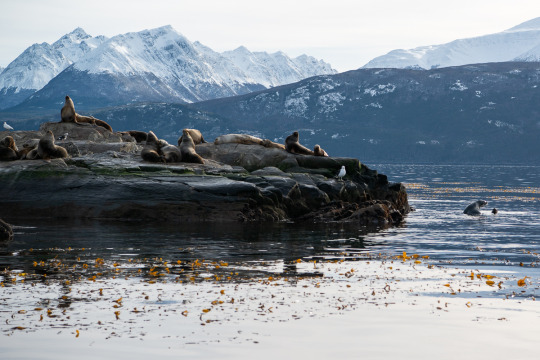
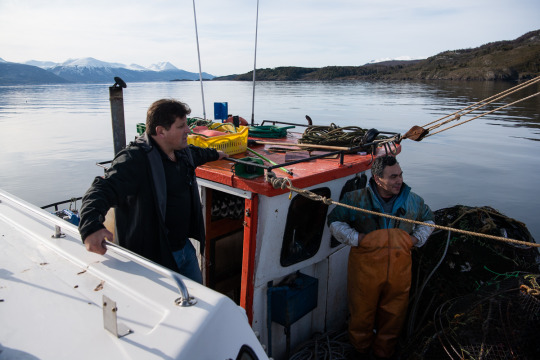

Crossing the channel, we sailed past a stunning landscape – mountain peaks cloaked in snow, rising up from the shore under a grey winter sky. We soon arrived in Puerto Williams, Chile, a destination well known for a trekking circuit through the island’s interior, the Dientes de Navarino mountain range. After having our passports stamped – my first visit to Chile! – we hopped on the bus from the luxurious Lakutaia Lodge to visit the local anthropology museum and a nearby restaurant, where the centolla ravioli was absolutely delicious.
Arriving back in Ushuaia that same afternoon, I had just enough time to catch a lift to the Ushuaia Aeroclub, which maintains six small planes for pilot training and sightseeing flights at the old military airstrip, built on a peninsula jutting out into the channel.
One of my hosts was a member of the club and helped me organize a sunset flight - a fantastic one hour loop over Ushuaia, eastward above the Martial Mountains and back to the west following the Beagle Channel, flying into a stunning golden sunset.

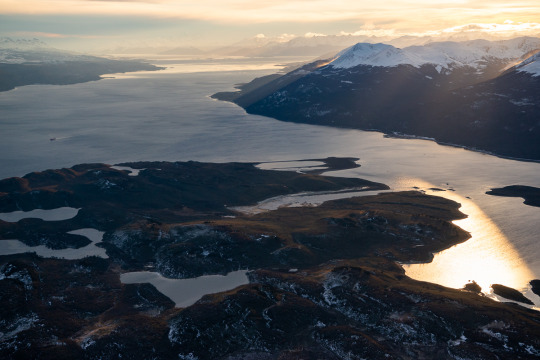
Over the next few days in Ushuaia, I worked in our local office with the team, before setting off with a colleague on the journey north across the island of Tierra del Fuego to the conference in Puerto Natales, Chile.
Our overland route would take us 770 km north by northwest, through the towns of Tolhuin, Rio Grande, San Sebastian, across the ferry at the Strait of Magellan and hundreds of more kilometers through Chilean Patagonia.
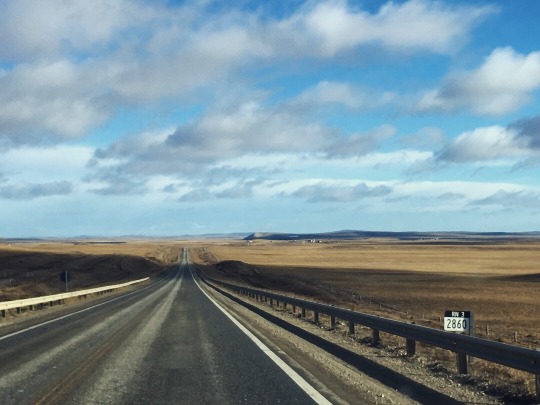
The days I had spent in Ushuaia felt almost metropolitan compared to this new landscape, which was completely desolate. We crossed the mountainous island and descended into lowland forests, driving down into the flat, windswept plains, where guanacos and ñandu scampered across the highway. We passed police checkpoints and old estancias, hugging the coastline as the big South Atlantic swells broke along the shore.
We drove through the port city of Rio Grande and on to the bay of San Sebastian and the Chilean border crossing. The wind blew so hard it slammed shut the doors of our little white Toyota Hilux, and we sheltered in the customs office while the border guards spoke cheerfully with my colleague – it seemed as if everyone knew each other already.
We drove all day, past herds of sheep and cattle, more guanaco and the little mini-ostriches, the ñandu. Finally, we reached the ferry crossing at Bahia Azul, where a long line of trucks and buses waited, parked in a quiet cluster facing the sea.
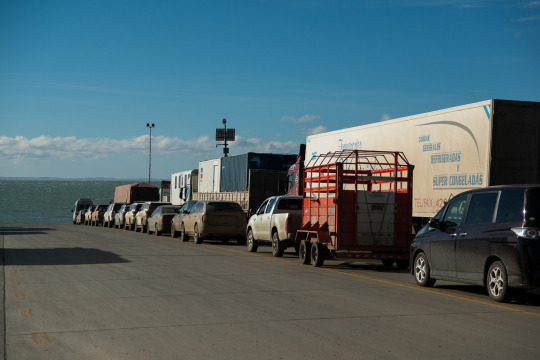

The wind had howled all day, pushing our little truck sideways on the highway and here at the ferry dock it was against us – the word filtered through that ferry service was suspended for at least four hours due to high waves.
The town of Bahia Azul is three small buildings; a government tourism office, a warehouse and a restaurant shop, where all of the drivers and passengers had taken refuge. The lone TV set played a Chilean soccer match while the owner and his wife served meat sandwiches, soft drinks and chocolate bars.
In the evening the winds calmed and the ferries began to stir, turning ever so slowly in our direction. Vehicle engines rumbled to life outside of the restaurant and the travelers filed out to find their buses and trucks. We joined the group and crowded our little truck into the press of vehicles onboard the first ferry to dock.
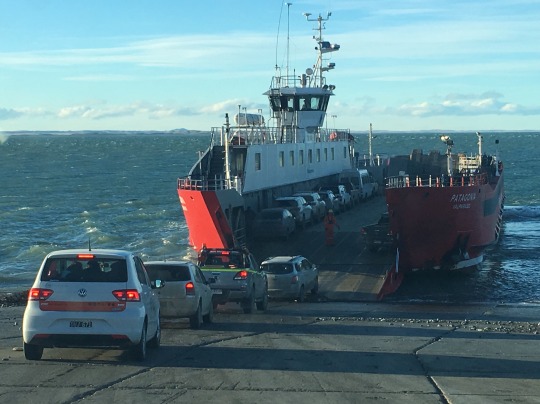
The drive through Chile was done in the fading light and then in darkness, beneath a canopy of starlight, past more abandoned estancias and Chilean carbinero checkpoints, until just before midnight we pulled in to the harbor town of Puerto Natales.
Something about this trip resonates deeply, long after I’ve come home and resumed the routine in urban Seattle. The hours on the road, the dust howling through the streets of Ushuaia, the hum and rattle of the Piper Cup five thousand feet above the water, the bellowing sea lions on the islets in the channel. Tierra del Fuego is the land of fire, and it was a trip I could scarcely believe I was even experiencing. I’ve promised myself that I must be going back.

1 note
·
View note
Text
US eyes military bases for coal, gas exports
BILLINGS, Mont. — The Trump administration is considering using West Coast military bases or other federal properties as transit points for shipments of U.S. coal and natural gas to Asia as officials seek to bolster the domestic energy industry and circumvent environmental opposition to fossil fuel exports, according to Interior Secretary Ryan Zinke and two Republican lawmakers.
The proposal would advance the administration’s agenda of establishing American “energy dominance” on the world stage and underscores a willingness to intervene in markets to make that happen. It’s tantamount to an end-run around West Coast officials who have rejected private-sector efforts to build new coal ports in their states.
In an interview with The Associated Press, Zinke cast the proposal as a matter of national security to ensure U.S. allies have access to affordable fuels. The Trump administration also has cited national security as justification for keeping domestic coal-burning power plants online to prevent disruptions of electricity supplies.
It’s unclear which sites are under consideration other than one in Alaska. Experts said the possibilities are constrained by the need for a deep water port.
Zinke said the administration is interested in partnering with private entities to ship coal or liquefied natural gas through naval installations or other federal facilities. He added it’s still early in the process.
“I respect the state of Washington and Oregon and California,” Zinke said. “But also, it’s in our interest for national security and our allies to make sure that they have access to affordable energy commodities.”
Accomplishing that, he said, may require the use of “some of our naval facilities, some of our federal facilities on the West Coast.”
Zinke specified only one site that could serve as an export hub, for natural gas: the former Adak Naval Air Facility in Alaska’s Aleutian Islands, which he suggested could receive fuel by barge from the North Slope. The base closed in 1997 and has been largely abandoned. Roughly 300 people live in the town of Adak, the westernmost community in the U.S.
Zinke did not reveal government properties that could serve as potential coal ports.
Exports have been held up as a lifeline for struggling domestic coal miners since demand for the fuel started to wane a decade ago, when many power plants switched to cheaper, cleaner fuels. The West Coast offers the most economical route for shipments to Asia because of its relative proximity to the largest coal-producing region in the U.S.: the Powder River Basin, which straddles the Montana-Wyoming border.
Any export site would need access to deep waters to accommodate large ships and enough land to store fuel awaiting shipment. Few such locations can be found on the West Coast, said Joe Aldina, a coal industry analyst with S&P Global Platts Analytics.
With the U.S. coal export market booming in recent months, Aldina said any new port established by the government would quickly fill with coal for shipment overseas. Yet with demand expected to fall over the long-term, particularly in Europe, the current high prices for coal are expected to drop.
Aldina expressed skepticism that government intervention could make much difference.
“Like everything else the Trump administration has tried to do, it’s a long shot whether some of these things will work, and it’s questionable whether they will really help the market,” he said, adding prices and fuel quality are the main drivers of coal markets, not government policies.
Resistance to exports — rooted in worries about air pollution, climate change and rail safety — and changing market conditions have resulted in six proposed coal ports in Washington and Oregon being rejected or shelved. A $680 million project in Longview, Washington, was denied a key permit last year by state regulators who said it would increase greenhouse gas emissions and cause “significant and unavoidable harm to the environment.”
That’s brought a backlash from elected officials in coal-producing states, who have blasted Washington Gov. Jay Inslee in particular. They argue the rejection of the Longview port, sponsored by Utah-based Lighthouse Resources, violated the commerce clause in the Constitution that says only Congress has the power to regulate international and interstate trade.
Montana, Wyoming and four other states joined Lighthouse Resources in a lawsuit challenging the rejection of the company’s Millennium Bulk Terminals port, which could handle up to 48.5 million tons (44 million metric tons) of coal a year.
Rep. Liz Cheney, a Wyoming Republican, said she’s spoken with Zinke and U.S. Energy Secretary Rick Perry about using federal facilities to circumvent opposition to proposed ports.
“That might be, for example, retired military facilities or other places where we would be able to use those for exports — frankly, to get around some of the unreasonable obstacles that have been thrown up,” Cheney said.
Prior to joining Trump’s cabinet, Zinke was a Montana congressman and Perry was governor of Texas. Both states are among the United States’ top coal producers.
Zinke said Commerce Secretary Wilbur Ross also was involved in the proposal.
Commerce Department officials said in a statement that the agency was working with the Interior and Energy Departments “to advance the Administration’s export agenda, and this is one such effort.”
Energy Department officials declined comment.
Republican U.S. Sen. Steve Daines of Montana said Zinke was looking at “all possibilities” for export terminals, including West Coast military installations.
“As a Montanan, he’s looking for ways here to help these Rocky Mountain states like Montana and Wyoming get access to Asian markets,” Daines said.
Coal exports to Asia more than doubled in 2017, according to the Energy Information Administration. The rise continued in the first half of 2018 with almost 23 million tons (21 million metric tons) of U.S. coal exported to Asian nations through June. South Korea, Japan and China were among the biggest recipients.
Despite those increases, the U.S. holds only a small share of the more than 1 billion tons (907 million metric tons) of coal shipped annually by sea. Clark Williams-Derry with the Sightline Institute, a left-leaning think-tank based in Seattle, said there’s little chance of that changing in the long-term.
“All the forces are lining up for the time being, making U.S. coal profitable, but fundamentally we’re in no position to dominate the Pacific Rim coal markets,” Williams-Derry said. “We’re bit players on the global stage.”
——
Follow Matthew Brown on Twitter at https://twitter.com/MatthewBrownAP
from Financial Post https://ift.tt/2NIgcCP
via IFTTT Blogger Mortgage
Tumblr Mortgage
Evernote Mortgage
Wordpress Mortgage
href="https://www.diigo.com/user/gelsi11">Diigo Mortgage
0 notes
Text
LOS ANGELES | States sue to pressure Trump to reunite immigrant families
New Post has been published on https://is.gd/lpf9gQ
LOS ANGELES | States sue to pressure Trump to reunite immigrant families
LOS ANGELES (AP) — Seventeen states, including New York and California, sued the Trump administration Tuesday to force it to reunite the thousands of immigrant children and parents it separated at the U.S.-Mexico border, as the legal and political pressure on the White House to reconnect families more quickly escalated.
The states, all led by Democratic attorneys general, joined Washington, D.C., in filing the lawsuit in federal court in Seattle, arguing that they are being forced to shoulder increased child welfare, education and social services costs.
“The administration’s practice of separating families is cruel, plain and simple,” New Jersey Attorney General Gurbir Grewal said in a statement. “Every day, it seems like the administration is issuing new, contradictory policies and relying on new, contradictory justifications. But we can’t forget: The lives of real people hang in the balance.”
Separately, immigration-rights activists asked a federal judge in Los Angeles to order that parents be released and immediately reunited with their children.
In a speech before the conservative Criminal Justice Legal Foundation in Los Angeles, U.S. Attorney General Jeff Sessions defended the administration for taking a hardline stand on illegal immigration and said the voters elected President Donald Trump to do just that.
“This is the Trump era,” he said. “We are enforcing our laws again.
We know whose side we are on — so does this group — and we’re on the side of police, and we’re on the side of the public safety of the American people.”
The Justice Department did not immediately respond to a request for a comment on the multistate lawsuit and had no comment on the Los Angeles filing.
More than 2,000 children have been separated from their parents in recent weeks and placed in government-contracted shelters — hundreds of miles away, in some cases — under a now-abandoned policy toward families caught illegally entering the U.S.
Amid an international outcry, Trump last week issued an executive order to stop the separation of families and said parents and children will instead be detained together.
But precious few families have been reunited, and the Trump administration has disclosed next to nothing on how the process will be carried out or how long it will take.
Juan Sanchez, chief executive of the nation’s largest shelters for migrant children, said he fears a lack of urgency by the U.S. government could mean it will take months to reunite families.
Sanchez with the nonprofit Southwest Key Programs said in an interview with The Associated Press that the government has no process in place to speed the return of children to their parents.
“It could take days,” he said. “Or it could take a month, two months, six or even nine. I just don’t know.”
Health and Human Services Secretary Alex Azar told Congress on Tuesday that his department still has custody of 2,047 immigrant children separated from their parents at the border. That is only six fewer children than the number in HHS custody as of last Wednesday.
Democratic senators said that wasn’t nearly enough progress.
“HHS, Homeland Security, and the Justice Department seem to be doing a lot more to add to the bedlam and deflect blame than they’re doing to tell parents where their kids are,” Oregon Sen. Ron Wyden said.
Under questioning, Azar refused to be pinned down on how long it will take to reunite families. He said his department does extensive vetting of parents to make sure they are not traffickers
masquerading as parents.
Tens of thousands of Central American migrants traveling with children — as well as children traveling alone — are caught on the Mexican border each year. Many are fleeing gang violence in their home countries.
At a Texas detention facility, immigrant advocates complained that parents have gotten busy signals or no answers from a 1-800 number provided by federal authorities to get information about their children.
Attorneys have spoken to about 200 immigrants at the Port Isabel detention facility near Los Fresnos, Texas, since last week, and only a few knew where their children were being held, said Simon Sandoval-Moshenberg of the Legal Aid Justice Center in Virginia.
“The U.S. government never had any plan to reunite these families that were separated,” Sandoval-Moshenberg said, and now it is “scrambling to undo this terrible thing that they have done.”
A message left for HHS, which runs the hotline, was not immediately returned.
Many children in shelters in southern Texas have not had contact with their parents, though some have reported being allowed to speak with them in recent days, said Meghan Johnson Perez, director of the Children’s Project for the South Texas Pro Bono Asylum Representation Project, which provides free legal services to minors.
“Things might be changing now. The agencies are trying to coordinate better,” she said. “But the kids we have been seeing have not been in contact with the parents. They don’t know where the parent is. They’re just distraught. Their urgent need is just trying to figure out, ‘Where is my parent?'”
Since calling for an end to the separations, administration officials have been casting about for detention space for migrants, with the Pentagon drawing up plans to hold as many as 20,000 at U.S. military bases.
At the same time, the administration has asked the courts to let it detain families together for an extended period while their immigration cases are resolved. Under a 1997 court settlement, children must be released from detention as quickly as possible, which generally has been construed to be within 20 days.
Outraged by the family separations, immigrant supporters have led protests in recent days in states such as Florida and Texas. In Los Angeles, police arrested 25 demonstrators at rally Tuesday ahead of Sessions’ address.
Outside the U.S. attorney’s office, protesters carried signs reading, “Free the children!” and “Stop caging families.” Clergy members blocked the street by forming a human chain. Police handcuffed them and led them away.
Later, protesters gathered outside the hotel where Sessions gave his speech. As the attorney general’s motorcade arrived, the crowd chanted, “Nazi, go home.”
By MICHAEL BALSAMO, WILL WEISSERT and GENE JOHNSON by Associated Press
#Los Angeles#reunite immigrant families#States sue to pressure Trump#TodayNews#Trump administration#U.S.-Mexico border#white house
0 notes
Text
LOS ANGELES | States sue to pressure Trump to reunite immigrant families
New Post has been published on https://is.gd/lpf9gQ
LOS ANGELES | States sue to pressure Trump to reunite immigrant families
LOS ANGELES (AP) — Seventeen states, including New York and California, sued the Trump administration Tuesday to force it to reunite the thousands of immigrant children and parents it separated at the U.S.-Mexico border, as the legal and political pressure on the White House to reconnect families more quickly escalated.
The states, all led by Democratic attorneys general, joined Washington, D.C., in filing the lawsuit in federal court in Seattle, arguing that they are being forced to shoulder increased child welfare, education and social services costs.
“The administration’s practice of separating families is cruel, plain and simple,” New Jersey Attorney General Gurbir Grewal said in a statement. “Every day, it seems like the administration is issuing new, contradictory policies and relying on new, contradictory justifications. But we can’t forget: The lives of real people hang in the balance.”
Separately, immigration-rights activists asked a federal judge in Los Angeles to order that parents be released and immediately reunited with their children.
In a speech before the conservative Criminal Justice Legal Foundation in Los Angeles, U.S. Attorney General Jeff Sessions defended the administration for taking a hardline stand on illegal immigration and said the voters elected President Donald Trump to do just that.
“This is the Trump era,” he said. “We are enforcing our laws again.
We know whose side we are on — so does this group — and we’re on the side of police, and we’re on the side of the public safety of the American people.”
The Justice Department did not immediately respond to a request for a comment on the multistate lawsuit and had no comment on the Los Angeles filing.
More than 2,000 children have been separated from their parents in recent weeks and placed in government-contracted shelters — hundreds of miles away, in some cases — under a now-abandoned policy toward families caught illegally entering the U.S.
Amid an international outcry, Trump last week issued an executive order to stop the separation of families and said parents and children will instead be detained together.
But precious few families have been reunited, and the Trump administration has disclosed next to nothing on how the process will be carried out or how long it will take.
Juan Sanchez, chief executive of the nation’s largest shelters for migrant children, said he fears a lack of urgency by the U.S. government could mean it will take months to reunite families.
Sanchez with the nonprofit Southwest Key Programs said in an interview with The Associated Press that the government has no process in place to speed the return of children to their parents.
“It could take days,” he said. “Or it could take a month, two months, six or even nine. I just don’t know.”
Health and Human Services Secretary Alex Azar told Congress on Tuesday that his department still has custody of 2,047 immigrant children separated from their parents at the border. That is only six fewer children than the number in HHS custody as of last Wednesday.
Democratic senators said that wasn’t nearly enough progress.
“HHS, Homeland Security, and the Justice Department seem to be doing a lot more to add to the bedlam and deflect blame than they’re doing to tell parents where their kids are,” Oregon Sen. Ron Wyden said.
Under questioning, Azar refused to be pinned down on how long it will take to reunite families. He said his department does extensive vetting of parents to make sure they are not traffickers
masquerading as parents.
Tens of thousands of Central American migrants traveling with children — as well as children traveling alone — are caught on the Mexican border each year. Many are fleeing gang violence in their home countries.
At a Texas detention facility, immigrant advocates complained that parents have gotten busy signals or no answers from a 1-800 number provided by federal authorities to get information about their children.
Attorneys have spoken to about 200 immigrants at the Port Isabel detention facility near Los Fresnos, Texas, since last week, and only a few knew where their children were being held, said Simon Sandoval-Moshenberg of the Legal Aid Justice Center in Virginia.
“The U.S. government never had any plan to reunite these families that were separated,” Sandoval-Moshenberg said, and now it is “scrambling to undo this terrible thing that they have done.”
A message left for HHS, which runs the hotline, was not immediately returned.
Many children in shelters in southern Texas have not had contact with their parents, though some have reported being allowed to speak with them in recent days, said Meghan Johnson Perez, director of the Children’s Project for the South Texas Pro Bono Asylum Representation Project, which provides free legal services to minors.
“Things might be changing now. The agencies are trying to coordinate better,” she said. “But the kids we have been seeing have not been in contact with the parents. They don’t know where the parent is. They’re just distraught. Their urgent need is just trying to figure out, ‘Where is my parent?'”
Since calling for an end to the separations, administration officials have been casting about for detention space for migrants, with the Pentagon drawing up plans to hold as many as 20,000 at U.S. military bases.
At the same time, the administration has asked the courts to let it detain families together for an extended period while their immigration cases are resolved. Under a 1997 court settlement, children must be released from detention as quickly as possible, which generally has been construed to be within 20 days.
Outraged by the family separations, immigrant supporters have led protests in recent days in states such as Florida and Texas. In Los Angeles, police arrested 25 demonstrators at rally Tuesday ahead of Sessions’ address.
Outside the U.S. attorney’s office, protesters carried signs reading, “Free the children!” and “Stop caging families.” Clergy members blocked the street by forming a human chain. Police handcuffed them and led them away.
Later, protesters gathered outside the hotel where Sessions gave his speech. As the attorney general’s motorcade arrived, the crowd chanted, “Nazi, go home.”
By MICHAEL BALSAMO, WILL WEISSERT and GENE JOHNSON by Associated Press
#Los Angeles#reunite immigrant families#States sue to pressure Trump#TodayNews#Trump administration#U.S.-Mexico border#white house
0 notes
Text
LOS ANGELES | States, immigrant supporters demand family reunifications
New Post has been published on https://is.gd/rEX44O
LOS ANGELES | States, immigrant supporters demand family reunifications
LOS ANGELES (AP) — Seventeen states, including New York and California, sued the Trump administration Tuesday to force it to reunite the thousands of immigrant children and parents it separated at the border, as the legal and political pressure mounted to reconnect families more quickly.
“The administration’s practice of separating families is cruel, plain and simple,” New Jersey Attorney General Gurbir Grewal said in a statement. “Every day, it seems like the administration is issuing new, contradictory policies and relying on new, contradictory justifications. But we can’t forget: The lives of real people hang in the balance.”
The states, all led by Democratic attorneys general, joined Washington, D.C., in filing the lawsuit in federal court in Seattle, arguing that they are being forced to shoulder increased child welfare, education and social services costs.
Separately, immigration-rights activists asked a federal judge in Los Angeles to order that parents be released and immediately reunited with their children.
The Justice Department did not immediately respond to a request for a comment on the multistate lawsuit. It had no comment on the Los Angeles filing.
In a speech before the conservative Criminal Justice Legal Foundation in Los Angeles, Attorney General Jeff Sessions defended the administration for taking a hardline stand on illegal immigration and said the voters elected the president to do just that.
“This is the Trump era,” he said. “We are enforcing our laws again.
We know whose side we are on — so does this group — and we’re on the side of police, and we’re on the side of the public safety of the American people.”
More than 2,000 children have been separated from their parents in recent weeks and placed in government-contracted shelters — hundreds of miles away, in some cases — under a now-abandoned policy toward families caught illegally entering the U.S.
Amid an international outcry, President Donald Trump last week issued an executive order to stop the separation of families and said parents and children will instead be detained together.
But precious few families have been reunited, and the Trump administration has disclosed next to nothing on how the process will be carried out or how long it will take.
Health and Human Services Secretary Alex Azar told Congress on Tuesday that his department still has custody of 2,047 immigrant children separated from their parents at the border. That is only six fewer children than the number in HHS custody as of last Wednesday.
Democratic senators said that wasn’t nearly enough progress.
“HHS, Homeland Security, and the Justice Department seem to be doing a lot more to add to the bedlam and deflect blame than they’re doing to tell parents where their kids are,” Oregon Sen. Ron Wyden said.
Under questioning, Azar refused to be pinned down on how long it will take to reunite families. He said his department does extensive vetting of parents to make sure they are not traffickers masquerading as parents.
Tens of thousands of Central American migrants traveling with children — as well as children traveling alone — are caught on the Mexican border each year. Many are fleeing gang violence in their home countries.
At a Texas detention facility, immigrant advocates complained that parents have gotten busy signals or no answers from a 1-800 number provided by federal authorities to get information about their children.
Attorneys have spoken to about 200 immigrants at the Port Isabel detention facility near Los Fresnos, Texas, since last week, and only a few knew where their children were being held, said Simon Sandoval-Moshenberg of the Legal Aid Justice Center in Virginia.
“The U.S. government never had any plan to reunite these families that were separated,” Sandoval-Moshenberg said, and now it is “scrambling to undo this terrible thing that they have done.”
A message left for HHS, which runs the hotline, was not immediately returned.
Since calling for an end to the separations, administration officials have been casting about for detention space for migrants, with the Pentagon drawing up plans to hold as many as 20,000 at U.S. military bases.
At the same time, the administration has asked the courts to let it detain families together for an extended period while their immigration cases are resolved.
Under a 1997 court settlement, children must be released from detention as quickly as possible, which generally has been construed to be within 20 days.
Outraged by the family separations, immigrant supporters have led protests in recent days in states such as Florida and Texas.
On Tuesday, police arrested 25 demonstrators at a rally ahead of Sessions’ address.
Outside the U.S. attorney’s office, protesters carried signs reading, “Free the children!” and “Stop caging families.” Clergy members blocked the street by forming a human chain. They were handcuffed by police and led away.
Later, protesters gathered outside the hotel where Sessions gave his speech. As the attorney general’s motorcade arrived, the crowd chanted, “Nazi, go home.”
By MICHAEL BALSAMO, WILL WEISSERT and GENE JOHNSON by Associated Press
#family reunifications#immigrant children#immigrant supporters#Los Angeles#political pressure#Seventeen states#TodayNews#Trump administration
0 notes